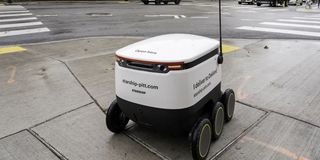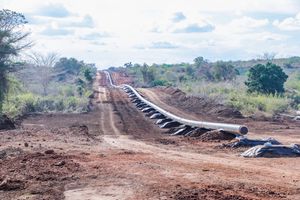Worker shortage: Why doesn’t Japan come to Africa?

Delivery robots are virtually inevitable and are already being used in many countries. PHOTO | COURTESY
An article in The Citizen of March 30, 2023 sent me scurrying to satisfy my rising curiosity.
Titled ‘Why advancements in tech puts (sic) jobs at risk,’ the article said a recent data analysis showed that “the number of jobs created in the Industrial Sector … rose by 19,866 between 2020 and March 2023!”
“About 280,899 workers were employed in the Industrial Sector in 2017…” That number grew to “306,180 in the following year (2018), and to 370,485 in 2020. However, “the employment numbers dropped to 345,615 in 2021…” the study showed.
And, according to the National Bureau of Statistics (NBS: The Citizen; March 30, 2023), “six-out-of-ten workers in the Industrial Sector moved to the Agricultural and the Services Sectors within the past six years…”
Apparently, this decline in the number of workers in industries results from a systematic adoption of rapidly-advancing technologies that include digitization and other forms of automation in production and related services.
For example, after modernising its wheat factory in Buguruni, Dar es Salaam, the Bakhresa Group has reduced its number of porters from 30 to four. Virtually ditto for the Dangote Cement factory in Mtara which has completely done away with porters after automation of some of its operations.
If nothing else, this proves to a certain extent that Tanzania’s Agricultural Sector still has a long way to go in adopting automation and related modern technologies. But, I’d like to believe that it’s only a matter of time before it does so – thereby laying off hundreds-of-thousands of employees in favour of automation…
The question will then arise: what happens to the idle labour in the form of millions of agitated former employees who have been sidelined out of the Economy by automation and similar technological monsters?
Before you could say ‘George Washington McClintock,’ I came across an article in The Citizen of February 9, 2023 titled ‘Japan rolls out ‘humble and lovable’ delivery robots.’ [Incidentally, McClintock was “a wealthy US rancher who used his self-acquired power and influence in his area to keep the peace between farmers, ranchers, land-grabbers, Red Indians and corrupt government officials…” But, more on this another day].
Beginning this April 2023, Japan is rolling out self-driving, 4-wheeled delivery robots – doing so for lack of human labour! Robots are automatically-operated complex machines that usually replace human efforts at work…
Coming at a time when Tanzania is pitifully short of jobs for its people, the report sent me mentally reeling to learn that Japan suffers from acute labour shortage! Japan is one of the wealthiest seven ‘G-7’ countries which, in 2020, together accounted for over half-of-the-global net wealth (at over $200Trn); 32-to-46 percent of global gross domestic product, and ten percent of the world's population (794M people).
The robots will be used to deliver essentials to isolated communities, as well as in some selected metropolises. Japan is home to the oldest populations in the world, with about 30 percent of its 125M-strong population over 65 old.
Anyway, in this day and age of ecommerce, delivery robots are virtually inevitable – and are already being used in many countries.
But: how were goods delivered before the robots came on the scene? In any case, why did those countries – including Japan, especially – not turn to Arica for human labour? Untold numbers of jobless Africans are moving to Europe, South Africa, etc., in search of jobs – with many of them dying on the way or being imprisoned in transition.





